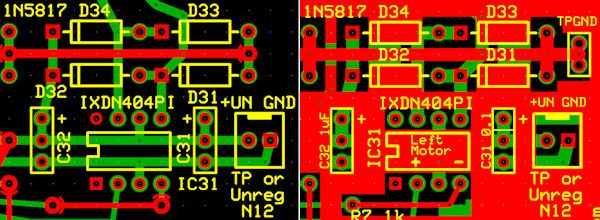Hmmm... Both tubes and SS generate odd and even harmonics. The harmonic structure is probably determined more by design and biasing than device; although there are intrinsic differences. Expanding the series for each device, you'll find bipolar transistors have an exponential characteristic, and tubes factorial, meaning fundamentally tubes have lower distortion.
Oh - sorry Don but a factorial characteristic expands to much larger values, much more quickly as "n" increases than ANY exponential series. This is a basic fact of complexity analysis in terms of defining problem limits. If in fact your "expansion of the series" for each device does yield a "exponential expansion" for solid state while tubes provide a factorial expansion then such would indicate ABSOLUTELY that the tubes are much higher in distortion. Which btw, they in fact ARE.
The real argument for employing tubes is NOT their accuracy as amplification devices - for they are not extremely accurate in a 10 octave bandwidth amplifier especially when the very non-linear coupling transformers are employed. However tubes do seem to produce a sound that human hearing (in all its glorious non-linear and completely misunderstood behavior) enjoys greatly. So the purpose of a sound system - regardless of cost - is ultimately human enjoyment. So rather than argue about the "accuracy" of a "hollow state" device vis a vi its solid state brethren it would seem far more appropriate for euphonic tube lovers to praise the characteristics of the bloated, ringy sound that tubes provide.
Something that I learned many years ago about transformers and their characteristics is that transformers are very non-linear depending on whether the field is being discharged or charged (collapsing or expanding the field). This learning was done during development of software for a certain type of missile that used a YIG (Yttrium-Iron-Garnet) oscillator - this particular crystal would oscillate with a frequency that was proportional to the B (field density) of a set of coils surrounding the crystal - compact little device about as large as the smaller (B4 I think) C ration cans. What we found was that to tune the oscillator "up" (or increase field density) in frequency was an order of magnitude faster than tuning the frequency down (decreasing field strength). In fact to "down tune" we had to create timing loops that would provide us with the "wait" factors necessary. In fact no coil (be it transformer or choke) is linear in terms of this charge/discharge phenomena.
Of course the "tube" types never mention this behavior - when in fact it is exactly this non-linearity that provides a tube amplifier with its "soggy, ringing" sound. But this gets, shall we say, glossed over in glowing descriptions of "sustains" and a "full sound".
I often hear so-called "high end" systems which generally in this era comprise a set of screechy, lean, bright, brittle speakers (sometimes costing as much as a ordinary house). This "high end" system is then coupled to soft, bloated and ringing tube amps and fed a generous diet of rolled-off vinyl to calm the result down to something approaching listenable. For if you play digital on this monstrosity (expensive monstrosity but still a monstrosity) it will take the tartar off your teeth at 10 paces.
Geez guys - accuracy? You expect accuracy from an active device that starts decaying the moment power is supplied? You expect accuracy from an amplifier that has to rely on huge piles of windings to couple to a real world load?
Yes you may get a much more enjoyable sound from your hollow state wonders - no question there. But it is NOT ABOUT ACCURACY.









